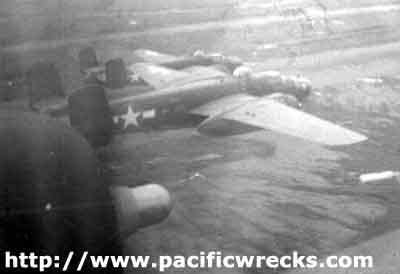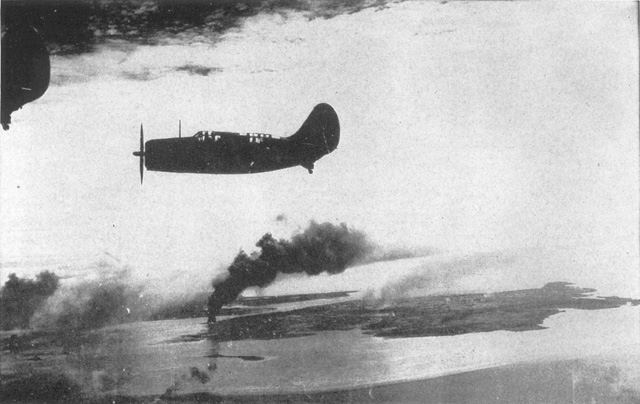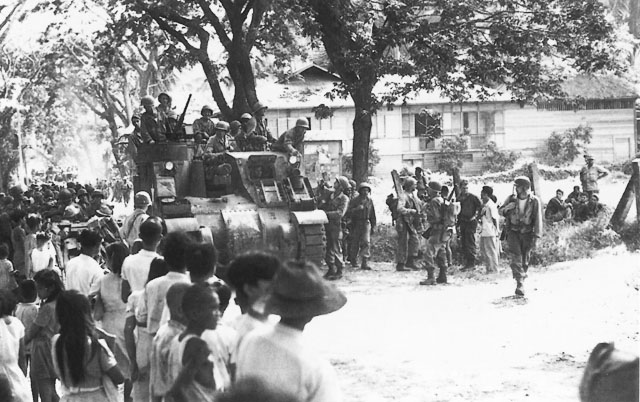Naa koy libro diri ..."Glimpses of Old Cebu: images of the Colonial Era" compiled by Lucy Urgello Miller....
Results 21 to 30 of 277
Thread: World War 2 - Cebu
-
09-12-2011, 05:13 PM #21
 Re: World War 2 - Cebu
Re: World War 2 - Cebu
-
09-12-2011, 05:15 PM #22Banned User

- Join Date
- Sep 2008
- Gender

- Posts
- 1,272
 Re: World War 2 - Cebu
Re: World War 2 - Cebu
waiting for the 2nd part...thanks bro..nice unta naa mga close up pics sa labangon og mambaling...ahahaha...para kakita ko sa among balay karaan..
-
09-12-2011, 05:16 PM #23
-
09-12-2011, 05:20 PM #24
 Re: World War 2 - Cebu
Re: World War 2 - Cebu
e scan ang bro... labi na ang mga pics. e online nato.
Other Source hinimo sa taga cebu:
http://anthro151.blogspot.com/search...max-results=20
From machinecult
from machinecult

*Note:Magallanes Street in Cebu as pictured from corner Manalili Street in the 1930's. The Japanese long before the war broke out operated numerous bazars where one could buy clothes, shoes, sporting goods, bicycles, and what have you at a minimal price. The one here was the Nippon Bazaar, probably the biggest bazar the Nipponese operated. The car on the foreground was a 1928 model; a Cebu Transit bus bearing the No. "6". Also, the "parada" or tarantilla could be seen.
Several Japanese merchants were actually IJA intelligence. They were here years before WWII for infiltration purposes; to adapt language, customs, even mannerism of local population.[/QUOTE]
---------------------------------------------------------------------------------

LST (Land Ship Tank) beached in a fishing village in Cebu with M-10 "Wolverine" tank destroyer disembarking.
Mission History
Took off from Puerto Princesa Airfield on a mission against Cebu City to provide ground support for US Army forces liberating Cebu. Over the target, crashed near Consolacion on Cebu Island. There was no fire during the crash.
Wreckage
The crash site was found immediately afterwards by a US Army patrol searching for survivors.
Recovery of Remains
The next day Filipino civilians found Lt. Ehrhardt alive, but he died soon after from injuries. During the initial search another body was found in a swamp.
On January 13, 1947 US Army AGRS recovered five crewmen who were interred as unknowns in USAF Cemetery #1 on Leyte on February 20, 1947 in Common Grave 8490 as X-566, X-567, X-568, X-569, X-570.
In 1949, these remains were disinterred and transported to the AGRS Mausoleum in Manila, Hanger 802, Row A Crypt 250 thru 254 as X-2363, X-2364, X-2366, X-2367, X-2369. In April 1949, records state the remains could not be individually identified, Assigned names of crew of Mission #299. These five sites of remains were then transported to the United States for group burial at Jefferson Barracks National Cemetery.
During 1951, another US Army team recovered more remains from the crash site. In a 1978 letter written by US Army veteran Mr. Harvey on Cebu who stated he received "several gunny sacks filled with skeletons, dog tags and a plane number" which he in turn sent to Clark AFB and a request was made for Winkler's dental records. One memo, 6 March 1951, states Orcutt and Emerson "now in our custody" and identification tags. There were several others not yet identified.
In 1953 another US Army team recovered more remains. The remains recovered from 1951 and 1953 were missing or lost for decades, unaccountable.
Relatives
Mickey Beard (sister of Winkler)

***UPDATE***

S/Sgt. George L. Winkler remains thought to have been buried in the US, finally comes home May 5, 2011 after extensive search by sister for 50 years!
Article >The long journey home

-----------------------------------------------------------------------------------------------------The horse-drawn caisson bearing Staff Sgt. Rip Winkler’s casket enters Arlington National Cemetery the morning of May 5, 2011, after a 9 a.m. service at Old Post Chapel at Fort Myer, Arlington. Winkler’s B-25 crashed in the jungles of the Phillipines in April 1945, and his sister, Mickey Beard, spent decades searching for her brother’s remains. More than 60 years after his death Rip Winkler was laid to rest with a full honors military funeral.
Officers of the IJA 35th Infantry Brigade and 124th Infantry "Kawaguchi Detachment" originally assigned in Borneo against the British, later in Cebu 1942 with them 12,000 troops.

Kawaguchi Detachment embarking.

General Suzuki in charge of the IJA 35th Army was killed trying to leave Cebu for Mindanao when his boat was struck by US airplane.
After being pulled out from the Cebu and then Mindanao Kawaguchi are sent to bloody Guadalcanal and only a few will be left alive to evacuate back to Burma.Last edited by Deadstring67; 05-30-2012 at 01:15 AM.
-
09-12-2011, 05:20 PM #25
 Re: World War 2 - Cebu
Re: World War 2 - Cebu
pangitaon man ang pics sa cebu. balik2x ra ang uban kong pangitaon. ge generalize man ang ubang pic nga philippines d mahibaw an kong asa dapit.
Company G, 182nd Infantry Regiments, A US Army Company who liberated Cebu
http://www.182ndinfantry.org/history...d/pacific/cebu
Invasion Plans
Without time to even catch their breath from the fighting on Leyte, the Americal Division was selected for a series of amphibious assaults on other Philippines Islands. The 132nd and 182nd Infantry Regiments were assigned to capture the island of Cebu, just west of Leyte. Cebu boasted a large harbor, and an airfield at the capital of Cebu City. American intelligence knew the island was occupied by a sizeable Japanese force, but they dramatically underestimated its size. Two regiments of American infantry - perhaps 5,000 men - were headed into a heavily fortified island defended by 15,000 Japanese soldiers.
H-Hour
On the morning of March 26, 1945, the flotilla bearing the troops of the Americal arrived off the shores of Cebu. The transport ships were protected by cruisers, destroyers, and other supporting craft. A deafening salvo of naval gunfire and rockets hammered the shores of the island. In the photo at right, tracked landing vehicles (LVT) swarm in towards the shore. The larger ships are infantry landing craft (LCI). Smoke masks the landing beach, and an explosion can be seen at the waterline towards the right edge of the photo.
Deadly Booby Traps
The first wave of troops ashore met with limited Japanese resistance. But while the enemy had conceded the beachhead, they had left behind a surprise for the Americans. The beach was blanketed with a heavy minefield, which even included large aircraft bombs buried under the sand. The original plan had been for the tracked amphibious landing craft to lead the push inland once they reached shore. But their numbers were decimated by the minefield. A logjam on the beach began to grow, as minesweeping equipment was not scheduled for deployment until much later in the day.
This photo shows soldiers of the 132nd Infantry coming ashore. The 132nd was responsible for the right sector of the beach, the 182nd the left side - behind the photographer in this photo.
Wave After Wave of Landing Craft
Despite the dangerous minefield on the beach, additional landing craft continued to make their way to the shores of Talisay, objective of the E-Day landings. Unlike the photo above, in this case the smaller landing craft are "Higgins boats" or LCVP, the well known landing craft with the metal swinging front gate. Successive waves, including the men of Company G, made their way ashore on Higgins boats. With the logjam on the beach, and growing fear of the minefield, the landing craft began to pull up short of the beach, and many of the men stepped out of the boat and into deep water, weighed down by their full combat loadout. Some found themselves completely underwater, and struggled to make it to shore.
In the background of this photo, the steep mountains and hills of Cebu loom. The Japanese defenders of the island had conceded the beach to the Americans, and pulled back into these well defended hills. This was consistent with their strategy in the Pacific in 1945. Their plan: allow the Americans to land, and then slaughter them from well concealed, heavily defended positions on high ground.
Pushing Inland
The chaos on the beach was soon rectified, and by late morning, Americal forces began pushing inland towards their objectives. They met only limited resistance. Most Japanese outposts had been abandoned. One unit from the 182nd discovered an empty shack, full of explosives, with a telephone ringing. But the Japanese were mostly nowhere to be found. There was only scattered resistance, and all objectives were met by the end of the day. The invasion had been a success.
The photo at right is taken in the 132nd Infantry sector of the beach, looking off towards the 182nd sector. Note the tracked landing vehicles parked all over the beach.
Taking the Capitol Building
On their second day on Cebu, units of the Americal continued their steady advance. Ahead of them was Cebu City, with its harbor, and beyond that, Lahug Airfield. One of the first major objectives of the day was the Provincial Capitol, seen here in a photo taken later that summer. Note the damaged and burned portions of the building. Fred Davis of Company G wrote later that he was the first soldier to enter the building. Advancing through a major city was a new experience for the soldiers of the Americal, but they found mostly abandoned Japanese positions, and a city ruined by Allied air and naval bombardment, and Japanese demolition work.
Map of the Invasion
This map overlay details the route taken by the 182nd Infantry during the first 3 days of the invasion of Cebu, along the coast of that narrow island. The location of the Provincial Capitol is marked on the red route taken by the 2nd Battalion. As the unit began to advance further inland, Japanese resistance began to increase. Notes on this map indicate incoming "90mm mortar and harassing fire." By March 29, Company G was in contact with the enemy in the foothills outside of town, as seen at the end of the route on this map.
Combined Arms
After years of fighting in the jungle, the open plains of the Philippines meant that forces of the Americal could work in concert with armored units. In this photo taken on March 28, units of the 2nd Battalion of the 182nd advance with tanks in the vicinity of Lahug Airfield. But the armored support was to prove fleeting, as combat transitioned into the rugged hills of the island.
Hills and More Hills
The men of the Americal spent early April grinding their way through a series of heavily defended hilltops. The night of April 12, the men of Company G, with two other companies, stormed up heavily defended Hill 21 in the dark of night. The hill was taken, but the cost was high. In the 24 hour period from April 12-13, the 182nd reported 7 killed and 51 wounded, against a reported 205 enemy KIA.
One member of Company G had a nerve-wracking incident just days later. Ken Vander Molen had joined the company two weeks earlier, along with his twin brother Gordon. On April 15, in yet another battle on a hill, Ken watched as his brother Gordon came sliding down the hill on his back, shot through the shoulder. Fortunately, Gordon was not seriously wounded, and after evacuation, later returned to the unit.
182nd Infantry Regiment: Unit Citation
The Americal Division eventually realized that the Japanese defenders on Cebu greatly outnumbered the invading American forces. In fact, later estimates put the number of Japanese in the 182nd Infantry sector at 6500 men - more than double the size of the 182nd. To top it off, the 182nd was running short of men, having come directly from the costly Leyte campaign. And the Japanese were in fixed defensive positions, built months or years earlier, thus heavily camouflaged by vegetation. The 182nd endured 878 casualties in less than a month fighting through this rugged, stiffly defended terrain. For their efforts, the regiment was awarded a Unit Citation by the Americal Division - the only time this award was ever bestowed by the division to an entire regiment. General Douglas MacArthur himself inspected the hills of Cebu that month, surveying the territory conquered by the Americal.
Networks of Caves
Japanese units on Cebu, like their counterparts on other islands in the Pacific, built elaborate defensive positions and networks of caves in the mountains of Cebu. Often, these hills were full of weapons or supplies. Here, soldiers of the 182nd rifle through Japanese supplies found in a cave on Babag Ridge, on April 19, 1945.
Patrol Actions
The Japanese presence on Cebu was large, but they continued to retreat in front of American forces. The 164th Infantry had joined the 182nd and 132nd on the island, and the full power of the Americal Division was now brought to bear. The Allies were in full control of the coastal regions of the island, with the Japanese retreating northwards, and finding refuge in the hills. This message, dated May 19, gives the details of a typical 182nd Infantry patrol action, including Company G.
In May 1945, the war in Europe came to an end. The Allied powers began to focus their attention exclusively on the defeat of Japan. With victory in Europe, selected veteran soldiers were rotated home, based on the duration of their service. Beginning in May, many of the older veterans of the unit - including Ed Monahan, John Mulcahy, and Tony Dziuszko - were finally sent home, after almost 4 years overseas.
The War is Over
The dropping of atomic bombs on Hiroshima and Nagasaki in August 1945 forced the Japanese to at last surrender. Emperor Hirohito made a radio announcement to the people of Japan on August 14, but the Japanese commanders on Cebu did not have a working radio. Allied forces dropped leaflets all over the island August 16, printed in both Japanese and English, telling the soldiers on the island to turn themselves in.
Note: Click on the leaflet to see both the Japanese and English versions of the text.
Negotiations for Surrender
It took several days to convince Japanese command on the island that the war was over. They replied to initial attempts to communicate with a note nailed to a tree: "do not believe your propaganda." But they soon obtained a working American radio, and realized that the surrender was a reality. On August 19, Japanese representatives finally met with Americal Division representatives to discuss the process of surrender, seen here at Sacsac.
A Formal Ceremony of Surrender
The Americal Division planned an elaborate ceremony to accept the surrender of the enemy on Cebu. General Douglas MacArthur tried to prevent ceremonies from occurring all over the Pacific prior to the formal surrender in Tokyo Bay. But the ceremony on Cebu went on as planned, despite a note from MacArthur forbidding it, with over 2600 Japanese soldiers lining up to be disarmed and taken prisoner. Thousands of troops came streaming out of the hills beginning with the first formal ceremony on August 28, and nearly 9000 had given themselves up by August 30. World War II officially ended just days later, with the signing of the armistice on September 2 aboard the battleship USS Missouri.Last edited by Deadstring67; 05-24-2012 at 06:31 PM.
-
09-12-2011, 05:28 PM #26
 Re: World War 2 - Cebu
Re: World War 2 - Cebu
pangitaa ko sa cebu..hahaaha..
Label of the pic: "Calle Tres de Abril, ca. 1918-1930"
texts from the book:
Calle Tres de Abril
At 3:00 p.m. on April 3, 1898, the Katipuneros led by Leon Kilat staged a fight against the Spaniards. They had a brief victory when the Spaniards were forced to retreat to Fort San Pedro at 5:00 p.m. A few days later, Spanish reinforcements from Iloilo arrived and ended the Katipunero's brief victory.
This street was originally called Paseo de Labangon during the Spanish times. It was later renamed Calle Valeriano Wyler, after a Spanish governor general who was sent to Manila to quell the 1896 revolution. Then it was once again renamed Tres de Abril to commemorate the deaths of martyrs during the 1898 uprising"

-
09-12-2011, 05:30 PM #27
-
09-12-2011, 05:30 PM #28Banned User

- Join Date
- Apr 2010
- Gender

- Posts
- 2,431
-
09-12-2011, 05:31 PM #29
-
09-12-2011, 05:36 PM #30
 Re: World War 2 - Cebu
Re: World War 2 - Cebu
kato sad d i ang away sa american - spanish.. staged act ra man to kato sa manila.
ge turn over sa spanish ang pinas sa mga amerkano.
from machinecult:
Chronological List of Japanese and American Operations in Cebu
Bombing areas of places and some details. (Will update more God-willing.)
December 8, 1941 - June 2, 1945
December 8, 1941
(IJN) H5K2 Emily bomb Cebu from Toko.
April 7, 1942
(5th AF) Aircraft fly recon over Japanese troop concentrations at Cebu
April 12, 1942
(5th AF) Royce Mission B-25s staging through Mindanao hit shipping at Cebu. Single B-17 hits Cebu Harbor.

B-25's parked at Mindanao
April 13, 1942
(5th AF) B-25's take off just after midnight during 12/13 Apr and bomb shipping at Cebu
September 11, 1944
THIRD FLEET PLANES strike Cebu. Unexpected lack of enemy air resistance during Halsey's daring raid led to a two-month speed-up in the Philippine invasion.

October 19, 1944
(FEAF) B-24s bomb the airfield at Cebu, hit nearby shipping

October 22, 1944
(FEAF) B-24s hit Opon and Lahug Airfields on Cebu
[IMG]http://4.bp.blogspot.com/_5PGVfWTpuQI/TLHQErhGcuI/AAAAAAAAAFA/Wb4ZKctLYqo*******lahug-cebu-cu.jpg[/IMG]
Aerial view of Lahug Airfield
October 27, 1944
(FEAF) Fighter-bombers, operating in 3 waves, hit shipping off Cebu
October 28, 1944
(USN) Fast Carrier Task Force attacks shipping near Cebu
November 1, 1944
(FEAF) B-24s bomb airfields at Cebu
November 6, 1944
(FEAF) B-24s strike Lahug at Cebu
November 7, 1944
(FEAF) Opon Airfield at Cebu
November 14, 1944
(FEAF) B-25s and fighter-bombers pound Lahug and Opon Airfield
November 15, 1944
(FEAF) B-25s and fighter-bombers attack targets of opportunity on Cebu. B-25s hit Lahug
November 25, 1944
(FEAF) Fighers-bombers sweep Cebu
December 1, 1944
(FEAF) B-25s with P-47 support, on Lahug Airfield on Cebu
February 3, 1945December 3, 1944
Survivors of the torpedoed USS Cooper (DD-695) made there way to Camotes island, where they were assisted by Filipinos and were later rescued by PBY flying boat after the Battle of Ormoc Bay.

USS Cooper 0013 night of December 3, 1944 lost 191 of her crew.
(FEAF) B-24s bomb Cebu City and surrounding targets.
Feburary 14, 1945
(FEAF) Fighters on armed reconnaissance strafe airfields on Cebu
March 16, 1945
(FEAF) B-24s bomb targets pinpointed by guerrillas on Cebu
March 19, 1945
(FEAF) B-24s hit a variety of targets on Cebu
March 20, 1945
(FEAF) B-24s pound the supply and personnel area E of Cebu City and N of Mambaling on Cebu
March 21, 1945
(FEAF) B-24s hit targets near Cebu City while A-20s pound other towns on Cebu
March 22, 1945
(7th AF) 20 B-24s from Angaur bomb Cebu.
(FEAF) B-24s and A-20s (along with US Marine Corps aircraft) hit Cebu City, defenses at several locations on Cebu
March 23, 1945
(FEAF) B-24s, B-25s, A-20s, and fighters hit Visayans, bombing Cebu City, hitting defenses on Cebu
March 24, 1945
(FEAF) B-24s and A-20s pound Cebu City and defenses and installations on Cebu
March 25, 1945
(7th AF) 23 B-24s from Angaur Island bomb defenses on Cebu
(FEAF) Cebu City is thoroughly pounded by nearly 70 B-24s
March 26, 1945 TALISAY LANDING
(FEAF) B-24s and A-20s hit Cebu City and E coast targets on Cebu

Actual video of the Talisay Landing -> US Troops Land in Cebu, Philippines March 1945 - YouTube
March 27, 1945
(FEAF) B-25s and P-38s hit the Cebu City area

Cebuanos greet American soldiers of the 182nd Division. Cebu City.
March 28, 1945
(FEAF) Bombers hit the Cebu City area
March 28, units of the 2nd Battalion of the 182nd advance with tanks in the vicinity of Lahug Airfield.
March 29, 1945
(FEAF) Cebu is bombed by B-25s in support of ground forces
March 30, 1945
(FEAF) B-24s and A-20s support ground forces on Cebu
March 31, 1945
(FEAF) B-25s, A-20s, and fighter-bombers hit Cebu targets, several of the strikes being flown in support of ground forces.
April 1, 1945
(FEAF) B-25s and A-20s support ground forces near Cebu City
April 2, 1945
(FEAF) Troops on Cebu are bombed by B-25s and fighter bombers.
April 3, 1945
(FEAF) troops in the Cebu City area. Lost is B-25J 44-31504. Liberator Bomber - The one with S/Sgt. George L. Winkler

Read Winkler Story here ---> https://www.istorya.net/forums/genera...l#post12714388
April 5, 1945
(FEAF) A-20s and patrolling P-61s support troops on Cebu
April 6, 1945
(FEAF) B-24s bomb a town N of Cebu City while fighters support ground units on Cebu
April 8, 1945
(FEAF) B-24s join A-20s and fighter-bombers in support of ground forces on Cebu
April 9, 1945
(FEAF) B-24s and fighter-bombers support ground forces on Cebu
April 10, 1945
(FEAF) B-24s and fighter-bombers support ground forces on Cebu
April 12, 1945
(FEAF) P-38s and A-20s support ground troops on Cebu
The night of April 12, the men of Company G, with two other companies, stormed up heavily defended Hill 21 in the dark of night. The hill was taken, but the cost was high. In the 24 hour period from April 12-13, the 182nd reported 7 killed and 51 wounded, against a reported 205 enemy KIA.
One member of Company G had a nerve-wracking incident just days later. Ken Vander Molen had joined the company two weeks earlier, along with his twin brother Gordon. On April 15, in yet another battle on a hill, Ken watched as his brother Gordon came sliding down the hill on his back, shot through the shoulder. Fortunately, Gordon was not seriously wounded, and after evacuation, later returned to the unit.
Ken Vander Molen
April 13, 1945
(FEAF) Support missions flown over Cebu
April 14, 1945
(FEAF) Support missions flown over Cebu
April 16, 1945
(FEAF) Support missions flown over Cebu
April 17, 1945
(FEAF) Support missions flown over Cebu
April 18, 1945
(FEAF) Support missions flown over Cebu
April 19, 1945
(FEAF) Support missions flown over Cebu
April 20, 1945
(FEAF) Support missions flown over Cebu
April 21, 1945
(FEAF) Support missions flown over Cebu
April 22, 1945
(FEAF) Support missions flown over Cebu
April 26, 1945
(FEAF) B-24s join USMC aircraft in pounding Cebu targets

CEBU CITY DEFENSES were attacked by (Marine Aircraft Group 14) MAG-14's fighter-bombers.
May 2, 1945
(FEAF) Support missions flown over Cebu
May 19, 1945
(FEAF) P-38s support ground action on Cebu
May 25, 1945
(FEAF) Fighter-bombers support ground force on Cebu
May 26, 1945
(FEAF) Fighter-bombers support ground forces on Cebu
June 2, 1945
(FEAF) Fighter bombers hit dug-in positions NW of Bogo on Cebu
August 19, 1945

Japanese on Cebu surrender.
Lt. General Kataoka of the 35th Army arrived in Cebu city to begin surrender negotiations. On August 28, 1945 Maj. Gen. William H. Arnold of the Americal Division accepted the surrender of 10,000 Japanese on the island. In the course of this grueling struggle, the Americal Division incurred 410 men killed and 1,700 wounded. Another 8,000 men were classified as non-battle casualties, most of whom succumbed to an outbreak of infectious hepatitis. In turn, some 5,500 Japanese soldiers lay dead. -- source: Pacific WrecksLast edited by Deadstring67; 05-30-2012 at 01:13 AM.
Advertisement
Similar Threads |
|





 Reply With Quote
Reply With Quote


